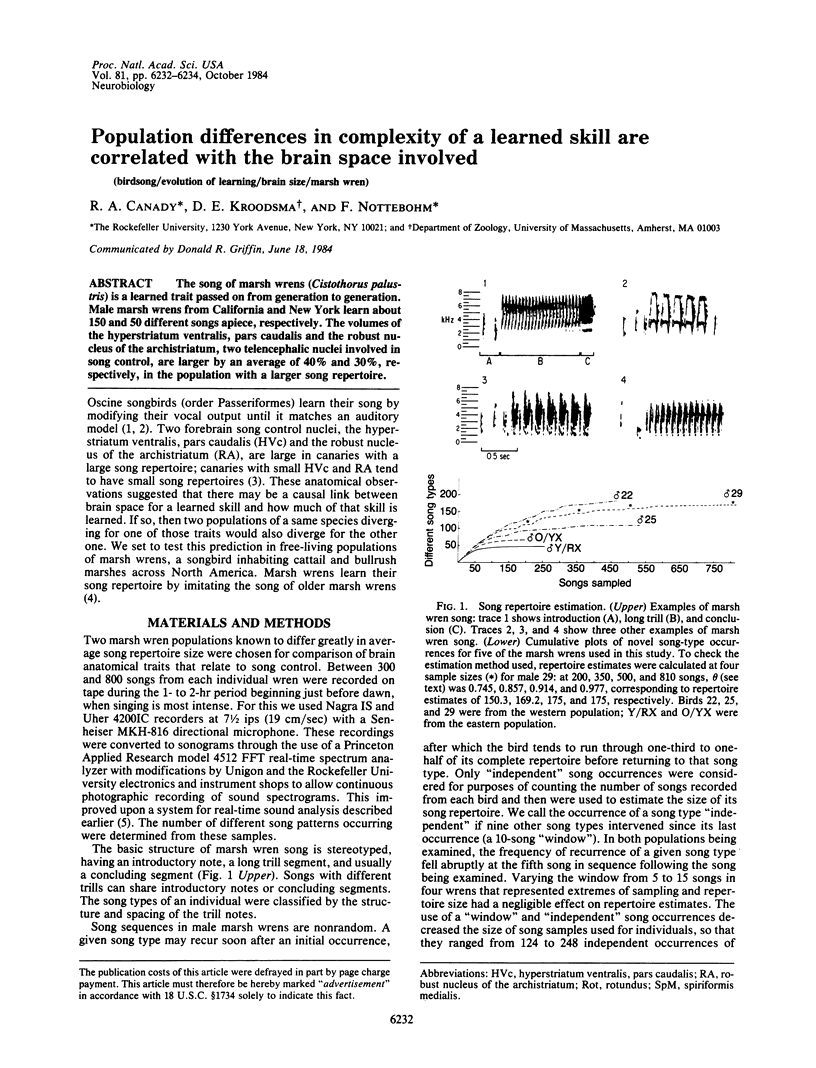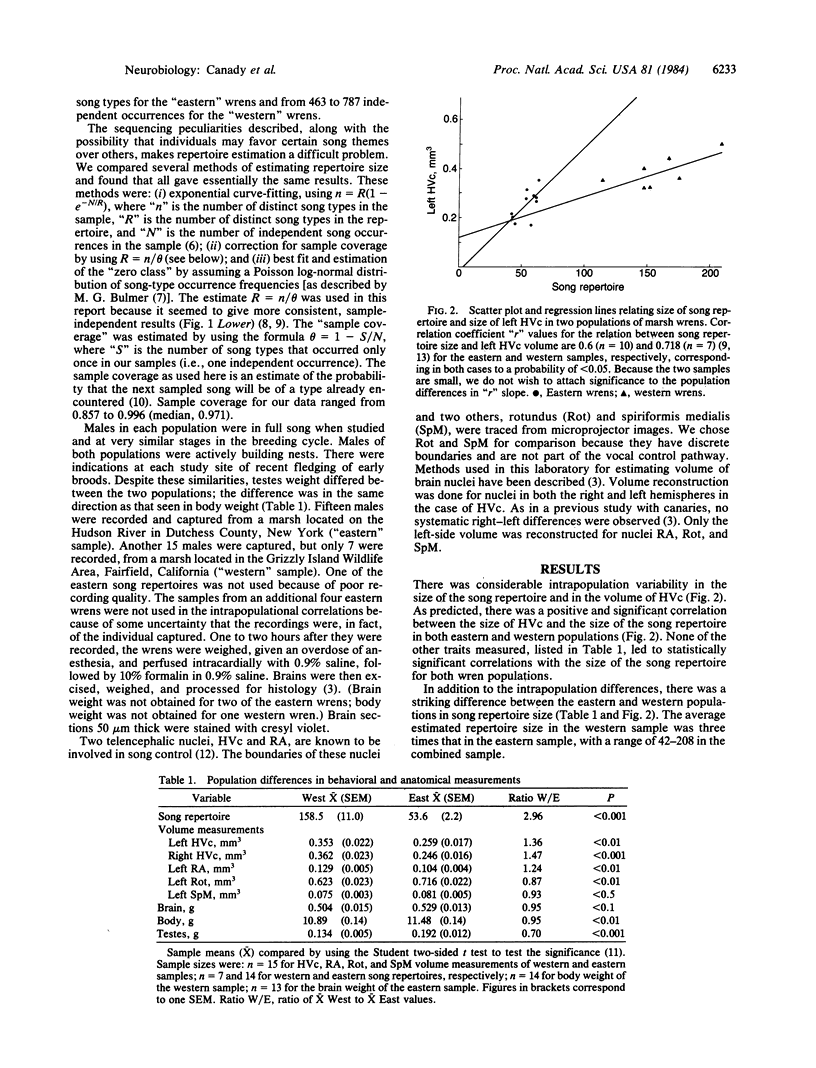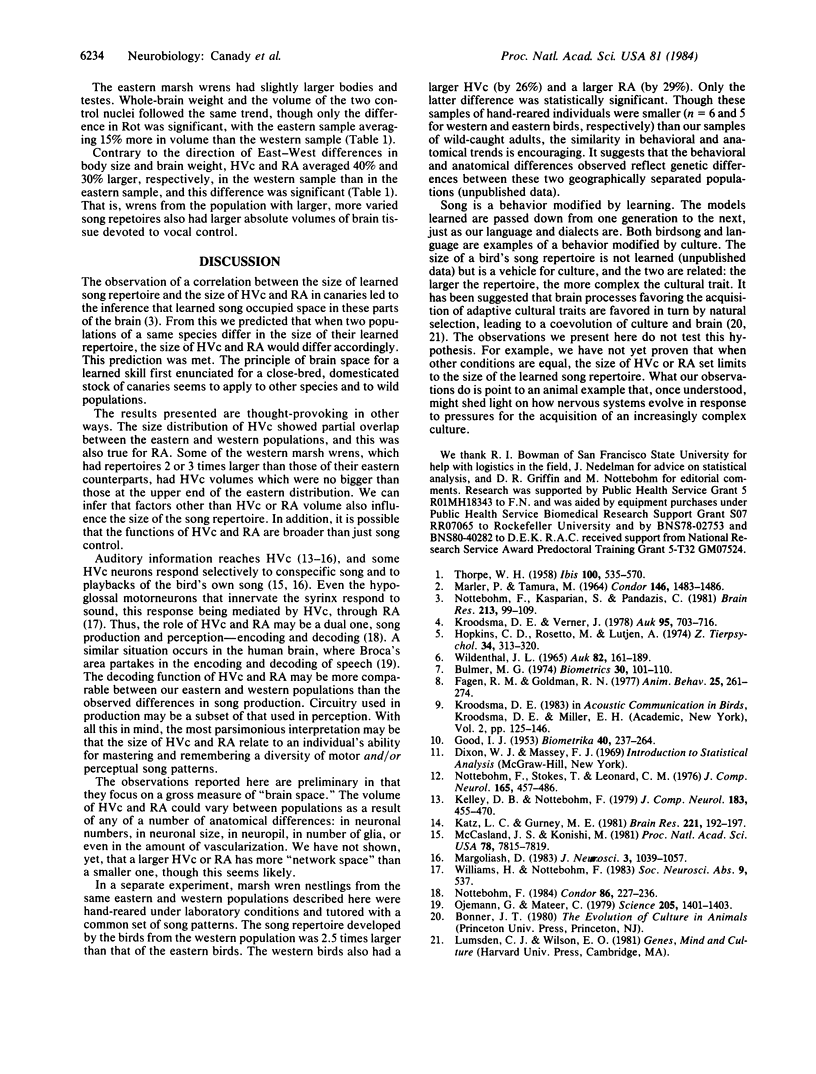Abstract
The song of marsh wrens (Cistothorus palustris) is a learned trait passed on from generation to generation. Male marsh wrens from California and New York learn about 150 and 50 different songs apiece, respectively. The volumes of the hyperstriatum ventralis, pars caudalis and the robust nucleus of the archistriatum, two telencephalic nuclei involved in song control, are larger by an average of 40% and 30%, respectively, in the population with a larger song repertoire.
Full text
PDF


Selected References
These references are in PubMed. This may not be the complete list of references from this article.
- Katz L. C., Gurney M. E. Auditory responses in the zebra finch's motor system for song. Brain Res. 1981 Sep 21;221(1):192–197. doi: 10.1016/0006-8993(81)91073-8. [DOI] [PubMed] [Google Scholar]
- Kelley D. B., Nottebohm F. Projections of a telencephalic auditory nucleus-field L-in the canary. J Comp Neurol. 1979 Feb 1;183(3):455–469. doi: 10.1002/cne.901830302. [DOI] [PubMed] [Google Scholar]
- MARLER P., TAMURA M. CULTURALLY TRANSMITTED PATTERNS OF VOCAL BEHAVIOR IN SPARROWS. Science. 1964 Dec 11;146(3650):1483–1486. doi: 10.1126/science.146.3650.1483. [DOI] [PubMed] [Google Scholar]
- Margoliash D. Acoustic parameters underlying the responses of song-specific neurons in the white-crowned sparrow. J Neurosci. 1983 May;3(5):1039–1057. doi: 10.1523/JNEUROSCI.03-05-01039.1983. [DOI] [PMC free article] [PubMed] [Google Scholar]
- McCasland J. S., Konishi M. Interaction between auditory and motor activities in an avian song control nucleus. Proc Natl Acad Sci U S A. 1981 Dec;78(12):7815–7819. doi: 10.1073/pnas.78.12.7815. [DOI] [PMC free article] [PubMed] [Google Scholar]
- Nottebohm F., Kasparian S., Pandazis C. Brain space for a learned task. Brain Res. 1981 May 25;213(1):99–109. doi: 10.1016/0006-8993(81)91250-6. [DOI] [PubMed] [Google Scholar]
- Nottebohm F., Stokes T. M., Leonard C. M. Central control of song in the canary, Serinus canarius. J Comp Neurol. 1976 Feb 15;165(4):457–486. doi: 10.1002/cne.901650405. [DOI] [PubMed] [Google Scholar]
- Ojemann G., Mateer C. Human language cortex: localization of memory, syntax, and sequential motor-phoneme identification systems. Science. 1979 Sep 28;205(4413):1401–1403. doi: 10.1126/science.472757. [DOI] [PubMed] [Google Scholar]


